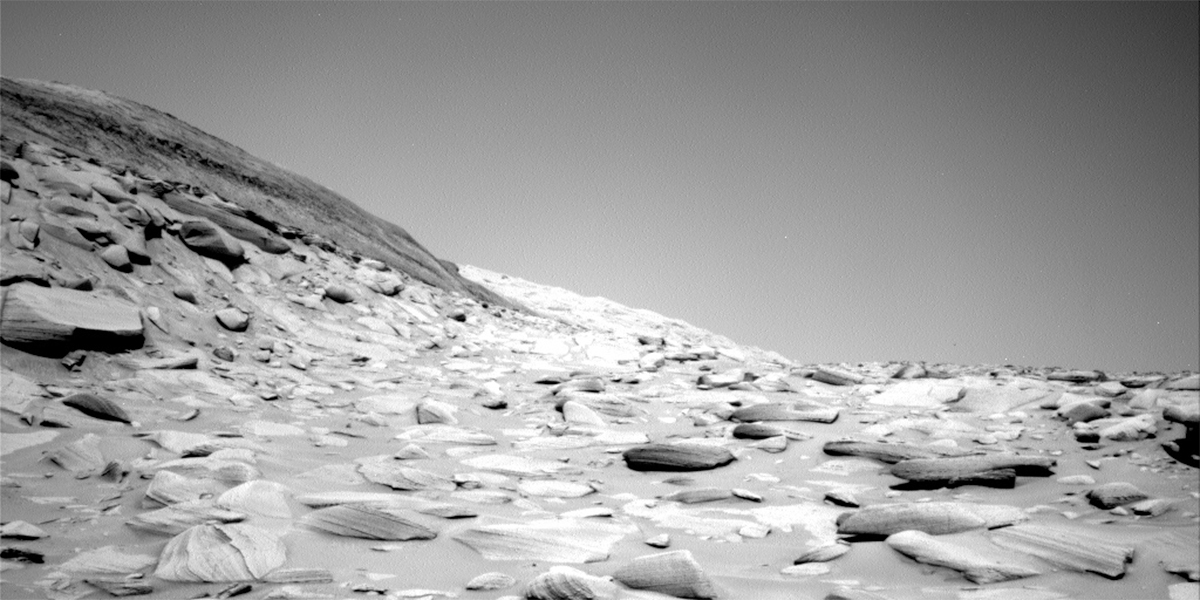An issue at a Deep Space Network station prevented the Sol 3785 plan from being sent to Mars, so none of those planned activities occurred. But the rover is in a good location and orientation for the software upgrade that is planned for next week, so no driving is included in the Sol 3786-3788 weekend plan. Similarly, no arm motion is allowed in the weekend plan, to ensure that MSL is ready for the upgrade. That means that there is plenty of time and power for remote sensing activities this weekend, so this 3-sol plan is packed with over 5 hours of remote observations! In addition, REMS and RAD will monitor the environmental conditions and DAN will measure the amount of hydrogen in the near subsurface.
The Sol 3786 plan starts with a bunch of Mastcam observations, to look for wind-driven changes in wheel-disturbed soil at 'Magneetrots' and acquire stereo mosaics of the terrain ahead, a possible vein network at 'Los Azulitas,' scoured bedrock at 'Tutu Kampu,' textures at the boundary between two geologic units, and layering at 'Theobroma.' Then ChemCam will use its laser to sample the chemical composition of bedrock target 'Mana' and acquire an RMI mosaic of strata exposed to the southeast of the rover. The Right Mastcam will document the Sol 3784 ChemCam AEGIS laser spots and look for wind-induced changes at 'Romeral' and 'Solimoes.' Navcam will then search for dust devils and clouds above the horizon before APXS measures atmospheric chemistry.
During the morning of Sol 3787, ChemCam will measure the elemental chemistry of bedrock target 'Ponta' and of the atmosphere above the rover, and Navcam will search for dust devils. Early that afternoon, the Right Mastcam will again look for changes in the Magneetrots soil and image the ChemCam LIBS spots on Mana and Ponta, then Navcam will check the dustiness of the atmosphere towards the north and search for clouds above the horizon. Later in the afternoon, Mastcam will survey the sky near the sun and measure the amount of dust in the atmosphere. Navcam will then survey the entire sky and search for clouds.
Early on Sol 3788, Navcam will search for clouds again and Mastcam will measure the dust in the atmosphere. Later that morning, ChemCam will measure the chemistry of a laminated float block named 'Emma' and the Right Mastcam will document the resulting laser spots. Early in the afternoon, Navcam will again search for clouds and dust devils, and both Mastcam and Navcam will look toward the north to monitor the dustiness of the atmosphere. Finally, several engineering activities are planned in the evening to prepare for the software update.
Early next week, while the software update is proceeding, the science team will have a 'virtual' meeting to discuss recent results and interpretations. If all goes well, normal science operations will resume around next weekend.
Written by Ken Herkenhoff, Planetary Geologist at USGS Astrogeology Science Center
from NASA Mars Rover Curiosity: Mission Updates https://ift.tt/z34NMy9

Comments
Post a Comment